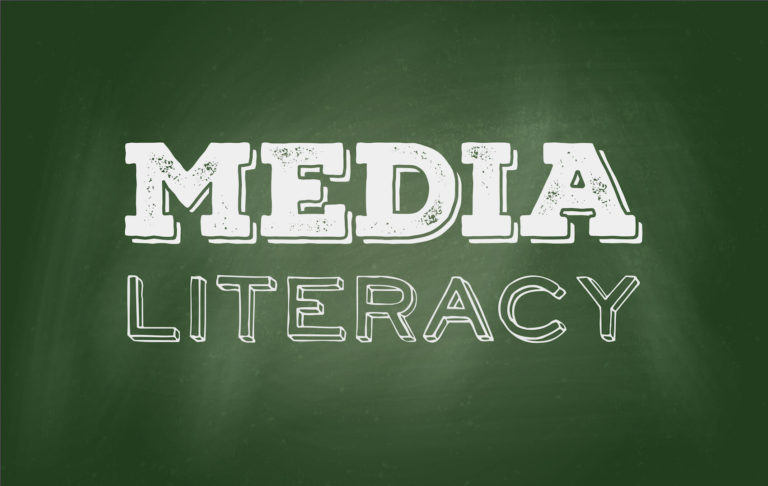The skills needed to succeed in school and in future careers look a little different in this 21st-century age than they did decades prior. Sure, collaboration, critical thinking, and communication all continue to land at the top of the charts. However, with technology tools continuing to shape and change the way students live and learn, another skill falls into play as a necessity: media literacy. What is media literacy, why is it so important, and what are some examples of how to teach and practice media literacy in the classroom?
What is Media Literacy?
Media literacy is the ability to identify different types of media and understand the messages that media is sending (Common Sense Media). Far beyond the traditional media such as newspapers, television, and radio, children take in a wide array of other media. This media has evolved since their parents’ time and includes everything from text messages to social media, viral videos, video games, and memes. While these forms of media are all different, they were created purposefully by someone and for a particular reason. That is why it is important that students understand the purposes behind the creation of content as well as why media literacy has been added to the list of 21st-century skills.
Why is Media Literacy Important?
Media literacy is important for several reasons. First off, it teaches kids to think critically about the media they are using. Students learn to ask questions about why a certain media was created, why certain aspects were included or why particular information was left out. Students also learn that not all media is factual, and that it is important to fact check sources. Determining whether something is credible is an important skill to have.
Additionally, recognizing point of view is another reason media literacy is important. Every creator has a perspective and is creating content based on their opinions, beliefs, or assumptions. Being able to understand the author’s perspective and where they are coming from helps students sort through media to determine the influence it may have. Asking students simple questions like “Who created this,” “Why did they create this,” “Who was this intended for,” “What details may have been left out,” or “How does this make you feel?” are all good ways to help kids think about the media they are accessing.
Media Literacy Examples to Try in the Classroom
Media Literacy is an important part of education and there are many different ways to incorporate it into the classroom. Below are a few examples you can use today.
The Effects of Brand Logos
Ask students to brainstorm various logos they are familiar with (Under Armour, Apple, McDonald’s, Starbucks, etc.). Create a list on the board. Use a Google search to pull up pictures of these logos. Ask students questions like, “Would you have still recognized this logo if it were a different color, if different shapes were used, or if it was in a different font?” Have students reflect on how important it is for companies to use the exact same logo every time, and how this logo influences consumers. Extension: have students design their own classroom or personal logo.
Finding Messages in Shows and Movies
Most media has underlying messages that are communicated to the audience. Disney movies, for example, have many examples of courage, loyalty, friendship, and determination. Have students watch short clips or short shows and have them identify the central message. Then have students write their own short story or act out a skit that has a theme or message that classmates can figure out.
Create a Newspaper
Whether digital or in paper format, newspapers act as the main form of news for many adults. Have students work together to create a class newspaper as they experience what it takes to research and write news. Divy up the content, having some students write fiction pieces and others non-fiction. Examples could be interviewing the principal on why she wanted to go into education, researching a current event, or writing about the history of the town. Have students think about how important it is to give accurate news and how the wording they use plays a role in how the writing is received.
Image Dissection
What do you see when you look at an image? What does it make you feel? When someone is not sure what they are looking at, how can that alter the news? In this activity, students will look at various images and write about what they think they are looking at. A simple Google search of “drawings with hidden images” gives a variety of options as does using famous art. Also, simply cropping a photo you have and creating your own “unclear” picture can be a good starting point.
As an extension, have students take their own close up pictures of objects around the classroom and see if classmates can figure out exactly what the picture is of. Use this activity to show students how news can get altered based on how the person looking at the scene, or photo, perceives what they are viewing.
Media literacy is an important skill needed in this 21st century. As technology continues to shape the way students live and how they will participate in the world as they enter into the job field, it is important that they understand the way media influences and shapes perceptions. Use the activities above to start teaching media literacy in your classroom. Students will enjoy and learn from taking a closer look into the media they use and reflecting on its purpose.




